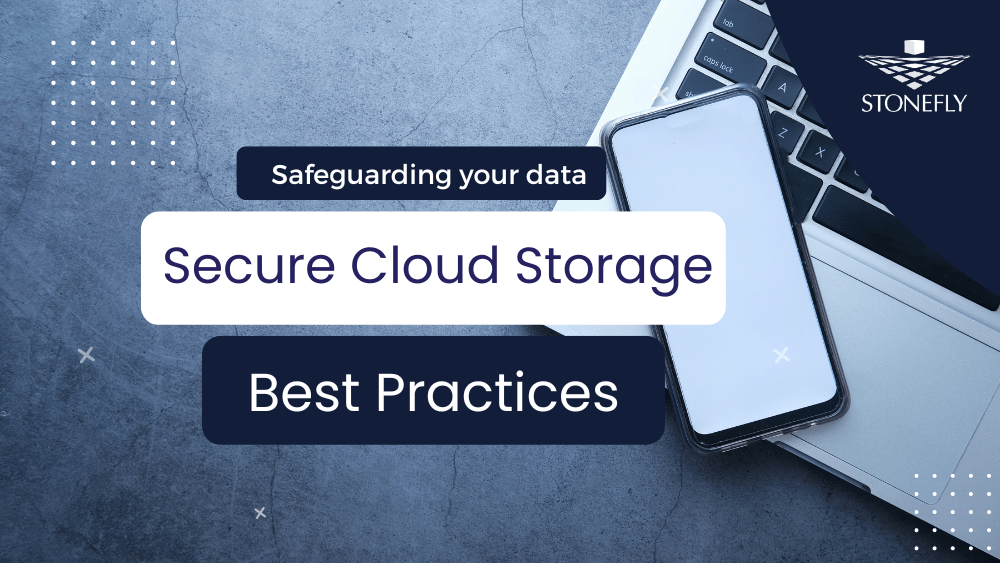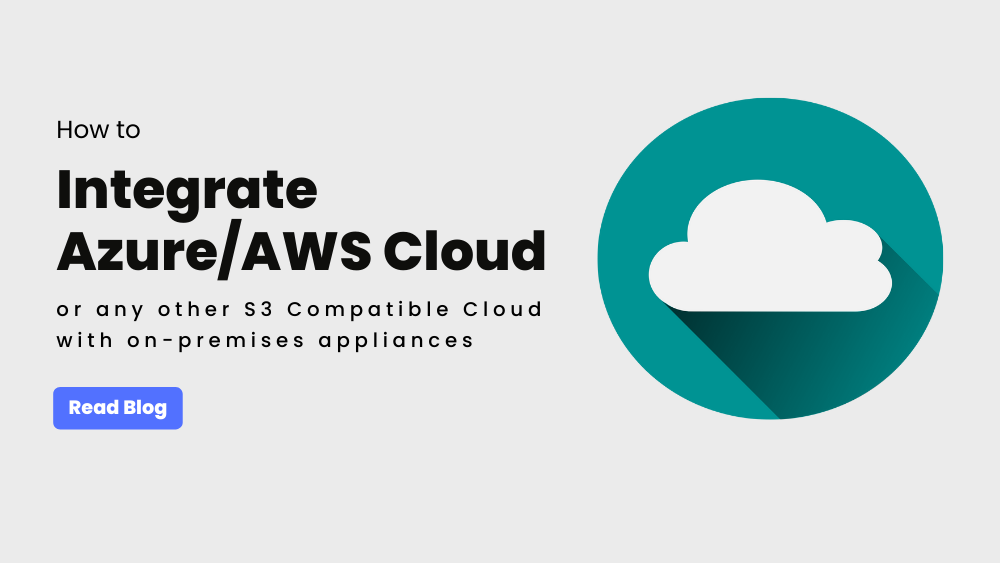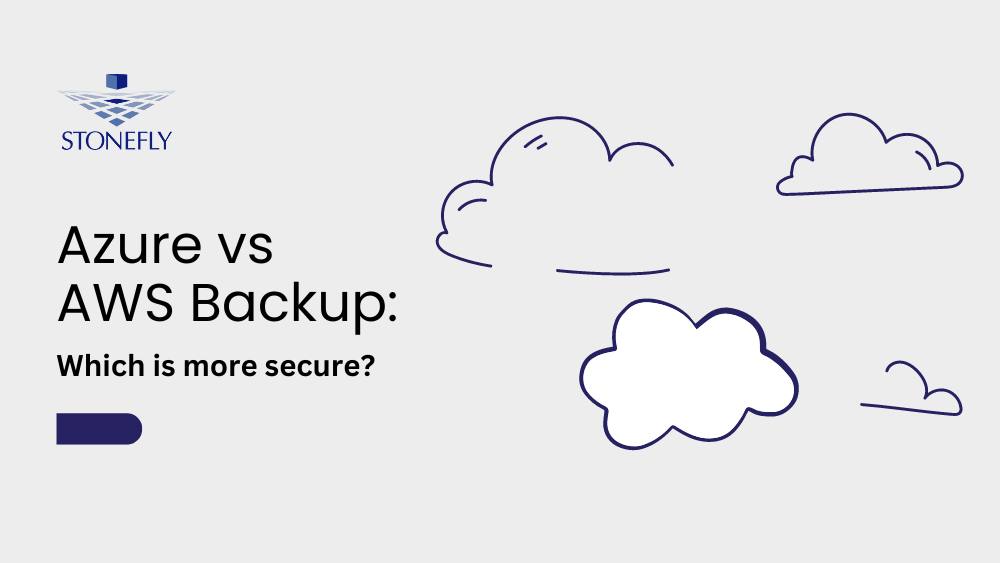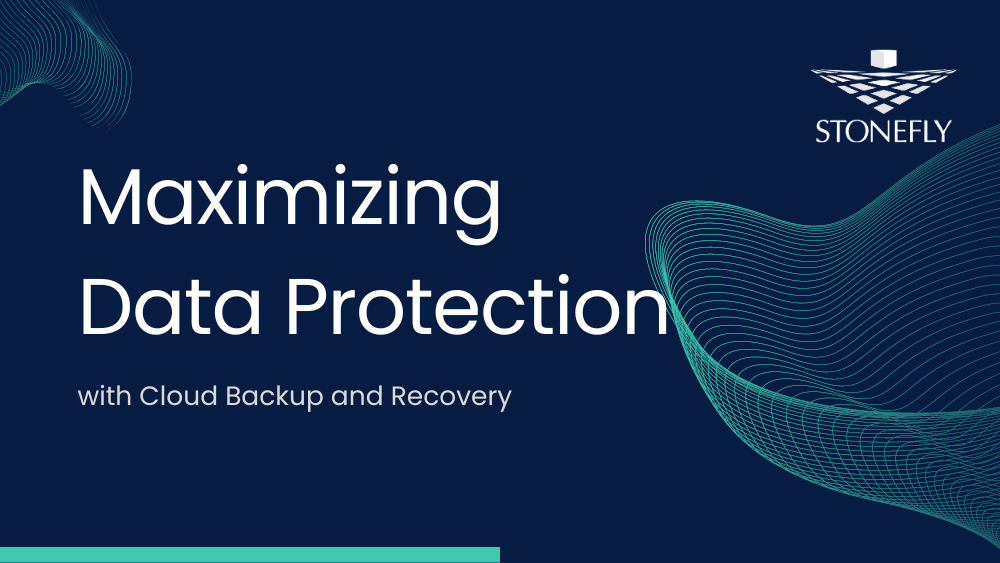As more businesses move towards cloud storage solutions, it’s becoming increasingly important for decision makers to understand how to implement and manage enterprise cloud storage solutions effectively. In this blog, we will provide practical tips and best practices for enterprise cloud computing that decision makers can use to maximize the benefits of cloud storage while ensuring enterprise cloud security.
By the end of this blog, readers will have a better understanding of the key considerations for selecting and managing enterprise cloud storage solutions that meet their business needs.
Cloud Security: Best Practices for Enterprise Cloud Storage Solutions
When it comes to storing critical business data in the cloud, security should always be a top priority. With the increasing number of cyber attacks and data breaches, it’s essential to implement strong security measures to protect your enterprise cloud storage solutions. In this section, we’ll discuss practical tips for improving cloud security.
- Access Controls
One of the most effective ways to improve cloud security is to implement strict access controls. This means limiting access to your enterprise cloud storage solutions to authorized personnel only. You can achieve this by using strong passwords, multi-factor authentication, and role-based access controls. By doing so, you can ensure that only those who need access to your data can actually access it.
- Encryption
Encryption is another essential aspect of cloud security. It involves converting your data into a coded language, which can only be deciphered using a unique decryption key. By encrypting your data, you can ensure that even if it’s intercepted by hackers or other unauthorized parties, it will be unreadable and useless. Make sure to use strong encryption methods, such as AES-256, to protect your sensitive business data.
- Data Backup and Recovery
Another important aspect of cloud security is data backup and recovery. Having a robust backup and recovery strategy in place can help you recover your data in case of a security breach, data loss, or natural disaster. Make sure to use a reliable backup solution that offers regular backups, automatic backups, and quick restores. Also, ensure that your backups are stored in a secure location, such as a private cloud, with proper access controls.
- Regular Security Audits
Finally, it’s essential to conduct regular security audits to identify potential vulnerabilities in your enterprise cloud storage solutions. This involves reviewing your security policies, procedures, and technologies to ensure they are up to date and effective. Regular security audits can help you identify potential security risks, such as unauthorized access, data leaks, and vulnerabilities in your systems, before they can be exploited by hackers or other malicious parties.
By following these best practices for cloud security, you can improve the security of your enterprise cloud storage solutions and protect your sensitive business data from cyber threats and data breaches.
Best Practices for Data Classification in Enterprise Cloud Storage
The ever-increasing amount of data generated by businesses has made data management a critical aspect of enterprise cloud storage. With data spread across multiple locations and platforms, data management becomes a complex task, posing several challenges such as data security, compliance, and storage optimization.
- Data Classification
One of the primary challenges of data management is classifying data according to its importance, sensitivity, and usage. Data classification enables organizations to identify and segregate data based on its criticality and assign appropriate security controls and storage policies.
- Lifecycle Management
Another key aspect of data management is the data lifecycle management process, which includes data creation, processing, storage, retrieval, and disposal. By implementing an effective data lifecycle management strategy, organizations can optimize storage utilization, reduce storage costs, and ensure that data is available when needed.
- Data Retention Policies
Data retention policies are crucial for compliance and legal purposes. These policies define how long data should be retained, when it should be deleted, and how it should be disposed of. By implementing data retention policies, organizations can ensure that data is retained for the required period and avoid data loss due to accidental or intentional deletion.
By following best practices for data management, businesses can ensure that their enterprise cloud storage solutions are optimized for security, compliance, and efficiency.
Planning Storage Capacity for Enterprise Cloud Solutions
In order to ensure optimal performance and cost-effectiveness of enterprise cloud storage solutions, it’s crucial to have a comprehensive storage capacity plan in place. In this section, we will discuss the importance of storage capacity planning and provide practical tips for estimating storage needs, monitoring usage, and scaling up as needed.
Importance of Storage Capacity Planning
Avoiding overprovisioning and overspending: Overprovisioning can lead to wasted resources and increased costs. By planning storage capacity needs accurately, organizations can avoid overprovisioning and overspending on storage resources.
Ensuring adequate storage for current and future needs: A comprehensive storage capacity plan takes into account current storage needs as well as anticipated future needs, ensuring that there is adequate storage available to meet growing demands.
Maximizing performance and availability: Proper storage capacity planning ensures that there is sufficient storage capacity to maintain optimal performance and availability of enterprise applications and data.
Avoiding data loss and service interruptions: Inadequate storage capacity can result in data loss and service interruptions, which can have serious consequences for organizations. Proper storage capacity planning can help avoid these issues.
Tips for Estimating Storage Needs
Analyze historical data and growth trends: By analyzing historical data and growth trends, organizations can gain insights into future storage capacity needs and plan accordingly.
Consider application requirements and data types: Different applications and data types have different storage capacity needs. Understanding these requirements is crucial for accurate storage capacity planning.
Take into account data redundancy and backup needs: Data redundancy and backup needs require additional storage capacity. Including these needs in the storage capacity plan ensures that adequate storage is available.
Factor in anticipated growth and expansion: Organizations need to consider anticipated growth and expansion when planning storage capacity needs to avoid the need for frequent storage capacity upgrades.
Monitoring Storage Usage
Implement monitoring tools and alerts: Implementing monitoring tools and alerts can help organizations track storage usage and identify potential issues before they become problems.
Regularly review usage reports and trends: Regularly reviewing usage reports and trends can help organizations stay on top of changing storage capacity needs and adjust their plans accordingly.
Adjust capacity as needed to maintain optimal performance: By monitoring storage usage, organizations can make adjustments to storage capacity as needed to maintain optimal performance.
Implement policies to prevent data hoarding and unnecessary storage usage: Implementing policies to prevent data hoarding and unnecessary storage usage can help organizations optimize their storage resources and reduce costs.
Scaling Up as Needed
Implement a scalable storage architecture: Implementing a scalable storage architecture allows organizations to add capacity as needed without disrupting operations.
Automate capacity provisioning to reduce manual intervention: Automating capacity provisioning can save time and reduce errors associated with manual intervention.
Consider hybrid cloud options for burst capacity needs: Hybrid cloud options can provide additional storage capacity when needed for short periods of time.
Test and validate the scalability plan to ensure seamless expansion: Testing and validating the scalability plan can help ensure that expansion is seamless and that performance remains optimal.
Maximizing Efficiency and Flexibility with Hybrid Cloud Storage
As organizations look for ways to balance cost-effectiveness, scalability, and data security, hybrid cloud environments are becoming increasingly popular for enterprise cloud storage. In this section, we will explore the benefits of hybrid cloud environments and provide practical tips for implementing and managing them, including data migration and disaster recovery.
Benefits of Hybrid Cloud Environments
- Flexibility: Hybrid cloud environments provide flexibility to organizations by allowing them to store data both on-premises and in the cloud. This enables organizations to take advantage of the scalability and cost-effectiveness of the cloud while still maintaining control over sensitive data.
- Cost Savings: Hybrid cloud environments can help organizations reduce costs by allowing them to store less sensitive data on the cloud, which is typically more cost-effective than on-premises storage. This can help organizations optimize their storage costs and reduce their overall IT spend.
- Disaster Recovery: By utilizing hybrid cloud environments, organizations can ensure that their data is backed up and can be recovered in case of a disaster. They can also take advantage of the geographically dispersed nature of the cloud to store backups in different locations, reducing the risk of data loss due to a localized disaster.
Best Practices for Implementing and Managing Hybrid Cloud Environments
- Data Migration: When implementing a hybrid cloud environment, it’s important to carefully plan and execute the migration of data to the cloud. This involves identifying which data should be moved to the cloud and when, as well as ensuring that the data is migrated securely and with minimal disruption to operations.
- Disaster Recovery Planning: When managing a hybrid cloud environment, it’s important to have a comprehensive disaster recovery plan in place. This involves identifying potential risks, designing backup and recovery processes, and regularly testing and validating the disaster recovery plan to ensure its effectiveness.
- Monitoring and Management: To ensure optimal performance and availability in a hybrid cloud environment, it’s important to have robust monitoring and management tools in place. These tools can help organizations track usage and performance metrics, identify potential issues, and take proactive steps to prevent service interruptions.
By implementing these practical tips, organizations can ensure that their hybrid cloud environments are secure, cost-effective, and well-managed.
Key Considerations for Selecting an Enterprise Cloud Storage Vendor
When it comes to choosing a vendor for enterprise cloud storage solutions, the stakes are high. The right vendor can help maximize performance, scalability, and cost-effectiveness, while the wrong vendor can result in costly downtime, security breaches, and other headaches. In this section, we will discuss the importance of vendor selection and provide practical tips for evaluating potential vendors.
Assessing Security Measures
- Get air-gapping in the cloud: Air-gapping in the cloud is an isolated repository in the cloud, which is only accessible when data is being written to or read from it. When idle, it is isolated and detached. This makes the data stored in these repositories protected from ransomware, hackers, virus, and malware – making it an essential component of a reliable enterprise cloud storage solution.
- Evaluate the immutability capabilities of the vendor’s cloud storage solutions. Look for features like S3 Object Lock and File Lock to ensure that data cannot be deleted or modified by unauthorized personnel.
- Review security certifications: Look for vendors that have received independent certifications such as SOC 2, ISO 27001, and HIPAA. These certifications show that the vendor meets or exceeds industry standards for security and compliance.
- Evaluate data encryption: Make sure the vendor encrypts data both in transit and at rest. Encryption protects data from unauthorized access and helps prevent data breaches.
- Check for multi-factor authentication: Multi-factor authentication provides an additional layer of security beyond a simple username and password. Look for vendors that offer this as an option for all users.
Evaluating Scalability
- Determine your current and future needs: Look for vendors that can support your current storage needs and have the capacity to scale up as your storage needs grow.
- Assess performance under load: Ask the vendor how their solution performs under heavy usage and if they have any performance benchmarks.
- Consider geographic reach: If you have multiple locations or a global presence, look for vendors with a wide geographic reach to ensure your data is accessible from anywhere.
Understanding Pricing Models
- Compare pricing models: Look at both upfront and ongoing costs for each vendor you are evaluating. Make sure you understand what you will be paying for and how the vendor’s pricing structure works.
- Beware of hidden costs: Look for hidden costs such as data transfer fees or costs associated with accessing archived data.
- Negotiate terms: Don’t be afraid to negotiate with vendors to get a better deal. Be clear about your budget and what you’re looking for in an enterprise cloud storage solution.
StoneFly Cloud Backup and Recovery Services
As data continues to grow exponentially, businesses need reliable backup and recovery solutions to ensure business continuity. StoneFly cloud backup and recovery services provide secure and scalable solutions for businesses of all sizes.
StoneFly Cloud Backup Services
StoneFly offers various cloud backup services that can fit the needs of any business.
- Cloud Backup as a Service: StoneFly’s Cloud Backup as a Service (BaaS) provides businesses with a reliable, fully managed backup solution that can be customized to fit their specific needs. It offers the flexibility of choosing between local and offsite backup, and it supports various platforms, including Windows, Linux, and macOS.
- Air-gapped and immutable repositories: StoneFly cloud backup services offer air-gapped and immutable repositories to ensure that backup data is secure from any cyberattacks or modifications.
- Image-based Backup: StoneFly’s image-based backup service provides full-image backups of servers and workstations. This solution provides a complete backup of the entire system, including operating systems, applications, and data.
- Cloud-to-Cloud Backup: StoneFly’s cloud-to-cloud backup service provides businesses with a secure backup solution for cloud-based applications.
StoneFly Cloud Recovery Services
StoneFly provides reliable and fast cloud recovery services to help businesses quickly recover their data and systems in the event of a disaster.
- Disaster Recovery as a Service (DRaaS): StoneFly’s DRaaS solution provides businesses with a comprehensive disaster recovery plan that includes backup and recovery of data, and shorter recovery time and point objectives, and systems in the event of a disaster.
- Cloud-based Recovery: StoneFly’s cloud-based recovery service allows businesses to quickly recover data and systems in the cloud, eliminating the need for on-premises hardware and reducing recovery time.
- Smart Protect: StoneFly’s Smart Protect is a professional service that offers businesses full or partial management of their backup and recovery needs. This service includes consultation, implementation, and ongoing support to ensure that businesses have a reliable and efficient backup and recovery solution.
StoneFly’s backup and recovery services provide secure and scalable solutions for businesses of all sizes. With the growing volume of data, it’s crucial for organizations to have a reliable backup and recovery plan in place to ensure business continuity. StoneFly’s customizable backup and recovery solutions, combined with their Smart Protect service, can help businesses of all sizes protect their data and quickly recover in the event of a disaster.
Conclusion
In conclusion, data storage and management is an essential aspect of running any business, regardless of the size or industry. Choosing the right enterprise cloud storage solution for your organization can be a complex process, but by following practical tips and best practices, you can ensure the security and integrity of your data. Remember to evaluate the immutability capabilities, review security certifications, consider data encryption and multi-factor authentication, and explore StoneFly’s cloud backup and recovery services.
With our solutions, you can be confident in the safety of your data, knowing that it is protected by state-of-the-art security features and best practices.
Summary of Practical Tips and Best Practices
- Assess your organization’s data storage needs and choose a cloud storage solution that aligns with your requirements and budget.
- Evaluate the security features of the vendor’s cloud storage solution, including air-gapping in the cloud, immutability capabilities, security certifications, data encryption, and multi-factor authentication.
- Consider a cloud backup and recovery service to protect against data loss and downtime.
- Review the vendor’s pricing and service level agreements to ensure you are getting the best value for your investment.
At StoneFly, we offer enterprise cloud storage solutions that prioritize the security and accessibility of your data. Our cloud backup and recovery services ensure your data is protected against data loss and downtime, and our experienced team is always available to assist with any concerns or issues that may arise.
Don’t wait until it’s too late, contact StoneFly today and secure your data.










